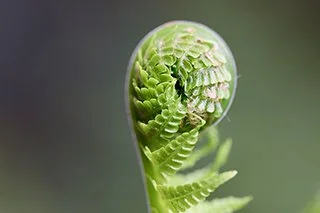A Journey of Awakening
Image by Annette Meyer from Pixabay
Back when I was a students at the College of Education, which is far too long ago for me to think about, I recall very little about being culturally aware or culturally responsive or even if there was much instruction about it at all. My most striking memory of Ako Pai Marae at the Wellington College of Education was being growled at for sitting on a table in the whare kai. I had no idea that it was tapu and I most certainly never did it again. Reflecting on this episode, I can see now that it was probably my first foray into being culturally aware and it was a commentary on how little I knew.
Fast forward nearly 30 years and I am now so deeply immersed in cultural awareness and all its various names (responsiveness, capacity, capability and, my new personal favourite, humility) that I find I am really noticing when a situation lacks cultural responsiveness. I would like to think that I have moved from the rākau to the ngākau as Sonja Macfarlane and Melissa Derby so wonderfully expressed in their 2018 blog. They talk about the rākau where things are done on a surface level to tick a culturally responsive box, as opposed to the ngākau where it is authentic and from the heart, it is just what is done. I found this a really thought-provoking piece and one I come back to a lot. With this in mind, I looked at the Government’s recently released new education priorities and I wonder where in there is the space for the power of being culturally aware in an Aotearoa New Zealand context and the benefits to both ākonga and kaiako.
Macfarlane et al. (2007) say that being in a culturally inclusive classroom benefits all students. Therefore, it is important to create schools that are culturally safe enough to allow students to be themselves and to achieve their full potential. As educators in Aotearoa New Zealand, we too need to be culturally capable and competent to, at the very least, meet the basic guidelines and vision of the New Zealand Curriculum. A vision where Māori and Pākeha young people work together to create an Aotearoa New Zealand where all cultures are valued for their contributions. A place where we recognise each other as full treaty partners (Ministry of Education, 2015).
Currently, a greater focus is placed on Te Tiriti o Waitangi and building cultural capability in initial teacher education (ITE) programmes (Ratima et al., 2020) than when I completed teacher training. As a member of the dominant culture, I know that I need to work on becoming more culturally capable or responsive (or one of the many other terms used) in order to at least live up to the rākau (Macfarlane & Derby, 2018) expectations as a kaiako in Aotearoa New Zealand. How do I, and other kaiako like me, take the next step to embrace the ngākau (Macfarlane & Derby, 2018)? What can be done to address the disparities that exist, and have occurred over multiple generations in Aotearoa New Zealand’s education system, between Indigenous Māori and New Zealand Europeans; the dominant culture (Savage et al., 2014)?
One thing that can be done to address these disparities and the inevitable inequity it brings, can be quite confronting. It is to examine your own beliefs and culture, examine your own position on the cultural environment you are operating in and then come to understand yourself and your origins (Bishop & Berryman, 2009; Harrison & Clarke, 2020; Macfarlane et al., 2007; Ratima et al., 2020; Savage et al., 2012; Yang & Gao, 2020). As you can see, there is plenty of research, both in Aotearoa New Zealand and overseas, that provides a departure point for such a journey. This professional self-awareness is what supports practice that enables Māori potential (and therefore the potential of all -Macfarlane et al., 2007) to be realised.
This wero (challenge) has been laid down and I accept it. How about you?
References:
Bishop, R., & Berryman, M. (2009). The Kotahitanga effective teaching profile.
Harrison, N., & Clarke, I. (2020). Decolonising curriculum practice: Developing the indigenous cultural capability of university graduates. Higher Education, 83(1), 183-197. https://doi.org/10.1007/s10734-020-00648-6
Macfarlane, A., Glynn, T., Cavanagh, T., & Bateman, S. (2007). Creating culturally-safe schools for Māori students. The Australian Journal of Indigenous Education, 36, 65-76. https://doi.org/10.1017/s1326011100004439
Macfarlane, S., & Derby, M. (2018). From the rākau to the ngākau: Exploring authentic approaches to leadership, policy, and pedagogy. Ipu Kererū. https://nzareblog.wordpress.com/2018/04/26/rakau-ngakau/
Ministry of Education. (2015). The New Zealand curriculum for English-medium teaching and learning in years 11-13. Learning Media Limited.
Ratima, M., Smith, J., Macfarlane, A., & Macfarlane, S. (2020). The Hikairo schema for primary: Culturally responsive teaching and learning. NZCER Press.
Savage, C., Macfarlane, A., Macfarlane, S., Fickel, L., & Te Hēmi, H. (2012). Huakina mai a whole school strength based behavioural intervention for Māori.
Savage, C., Macfarlane, S., Macfarlane, A., Fickel, L., & Te Hēmi, H. (2014). Huakina Mai: A kaupapa Māori approach to relationship and behaviour support. The Australian Journal of Indigenous Education, 43(02), 165-174. https://doi.org/10.1017/jie.2014.23
Yang, R., & Gao, C. Y. (2020). Rethinking cultural competence education in the global era: Insights from Fei Xiaotong's theory of cultural self-awareness. Frontiers of Education in China, 15(4), 539-563. https://doi.org/10.1007/s11516-020-0026-4
Krystyna Wishnowsky has been a Resource Teacher : Learning and Behaviour based in the Remutaka Cluster in Upper Hutt for five years and has over 25 years working in education. Prior to her current role, she worked as a Health School teacher based in an Adolescent Mental Health Unit and as a year 7/8 teacher at an Intermediate School. She recently completed a Master of Specialist Teaching where her research focussed on how RTLB can demonstrate cultural capability in their work with whānau and mokopuna. She is continuing this research working towards her PhD.

